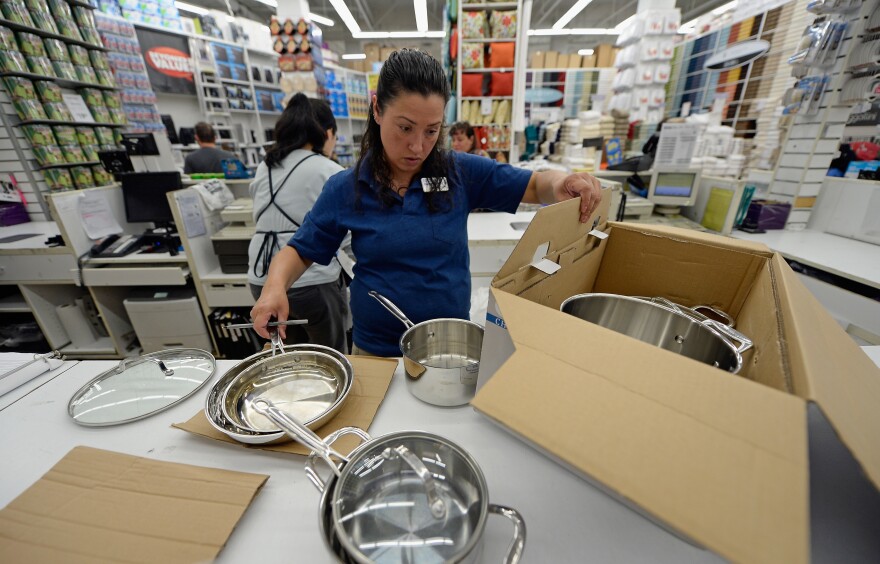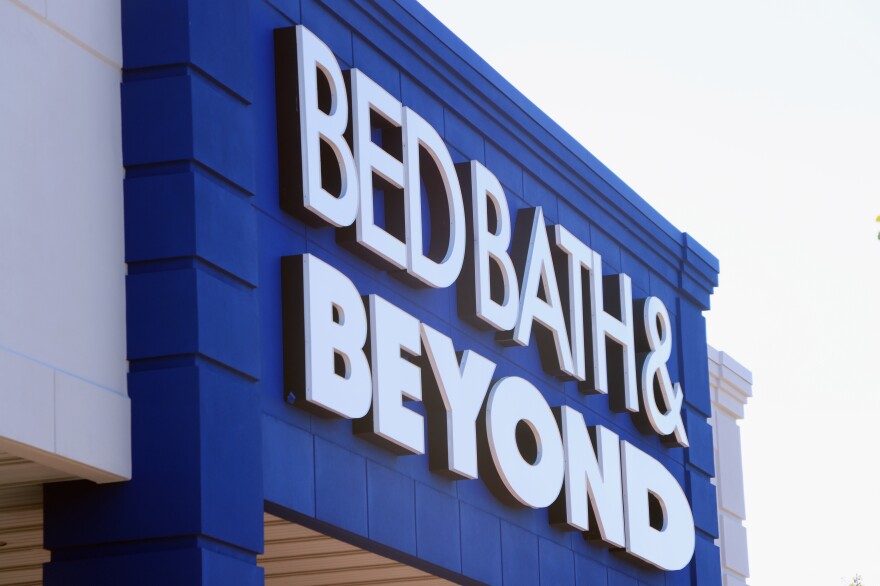It's hard to overstate the bumpiness of the rollercoaster ride that Bed Bath & Beyond has been on this year: its rise and crash as a meme stock, a leadership shakeup, trouble with suppliers, a turnaround to trump a previous turnaround, store closures, job cuts, and the shocking news of its financial chief's death.
The home-goods giant faces persistent speculation of a protracted but looming demise as it prepares to report its latest financial results on Thursday morning.
"It sort of looks like a decision tree from where it is now," Morningstar analyst Jaime Katz said: Will Bed Bath & Beyond reimagine itself and pull away from the brink, like Best Buy? Or will it continue to patch holes only to keep sinking, like Sears?
"You know, our best guess is that it comes in somewhere in between," Katz said.
How did this once-vaunted retail behemoth get here?
As recently as 2018, Bed Bath & Beyond had over 1,500 stores. It had hoovered up rivals, BuyBuy Baby and World Market. Even during the Great Recession, when many retailers folded, Bed Bath seemed to only grow.
Its stores had secret powers that shoppers loved
Yes, there was the iconic blue 20% off coupon that's so ever-present that even mobster Whitey Bulger had one in his kitchen drawer.
But the chain had another secret sauce behind the scenes: Unlike most retailers, Bed Bath & Beyond let local managers choose what to sell in each store, catering to local tastes.
"I remember seeing it very distinctively when I visited a Miami store," said Amy Laskin, a former Bed Bath content marketing executive. "Right when you walk in the doors was this wild, brightly colored, Disney-themed stuff — it was so Miami. And I thought, this will never sell anywhere else."
But the stores eventually became part of the problem
As online and mobile shopping exploded, Amazon, Target, Wayfair and others put up formidable competition. Bed Bath & Beyond spent years seeking — and never really finding — its online identity.
"I would go into one meeting and it would be, 'We need to be ... the destination for home, more upscale, home decor, more furniture,' " said Laskin, who left Bed Bath in 2017 and is now with consultancy Prophet.
"The next conversation would be, 'We need to be more competitive with Amazon. We need to be the destination with everything.' ... The next thing you know, we were carrying diamond jewelry like Costco does."

Bed Bath & Beyond whipped up a dizzying website. But its heart remained in its stores, with their stacks of cookware, walls of trashcans and piles of pillows. In the late 2010s, sales started dropping and a series of turnarounds began.
A high-profile new CEO pursued a big idea: Bed Bath would launch its own brands
In 2019, Mark Tritton arrived from Target. As Bed Bath CEO, he pushed to declutter stores and close 200 underperforming ones, to weed out national brands and launch Bed Bath's own labels, like Everhome and Nestwell.
This strategy had worked like a charm at Target, perfected over years. Bed Bath & Beyond rushed to replicate that success in months — right as the pandemic began.
Shoppers were already wary of visiting stores, so many never got to check out the new labels; some found them lacking and began complaining that they missed familiar brands.
The pandemic was a boon for home goods, but Bed Bath & Beyond missed out
The new-brands turnaround strategy exacerbated the industry-wide supply chain crisis, leaving top products like KitchenAid mixers missing from Bed Bath's shelves. The retailer played catch up, racing to roll out pandemic necessities like curbside pickup.
Earlier this year, activist investor Ryan Cohen of Chewy and GameStop fame bought a stake in the company, prompting his followers on Reddit and YouTube to pump up Bed Bath's stock. CEO Tritton and other leaders were ousted.
Then, just as suddenly, Cohen sold his entire stake. What ensued was what's become a familiar timeline of a rudderless retailer: The company announced closures of another 150 stores and job cuts for a fifth of its corporate and logistics staff. Suppliers began hesitating about sending more stuff to Bed Bath, worried they won't get paid.
Interim CEO Sue Gove is touting "a straightforward, back-to-basics philosophy," while the company scrambles to bring back national brands and shoppers are pulling back.
Now, the store has inflation to deal with; plus, shoppers are over their crazed pandemic-era clamor for furniture, bedding, kitchen appliances and home decor.
"We remain concerned by the magnitude of the sales declines," Telsey Group analyst Cristina Fernandez wrote, "and believe it will be challenging to win consumers back in a softer economic climate."
Copyright 2024 NPR. To see more, visit https://www.npr.org.





